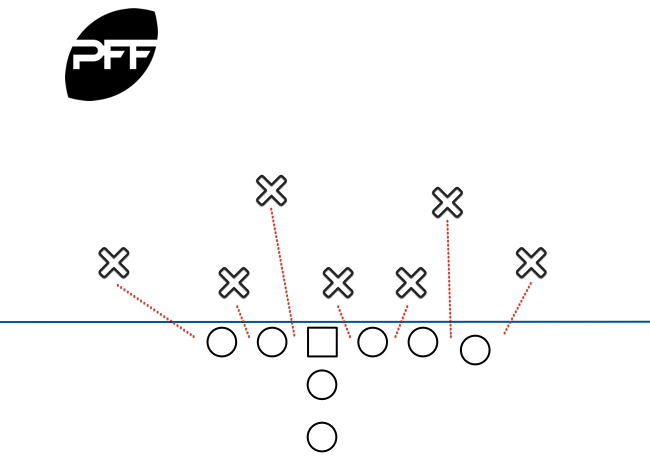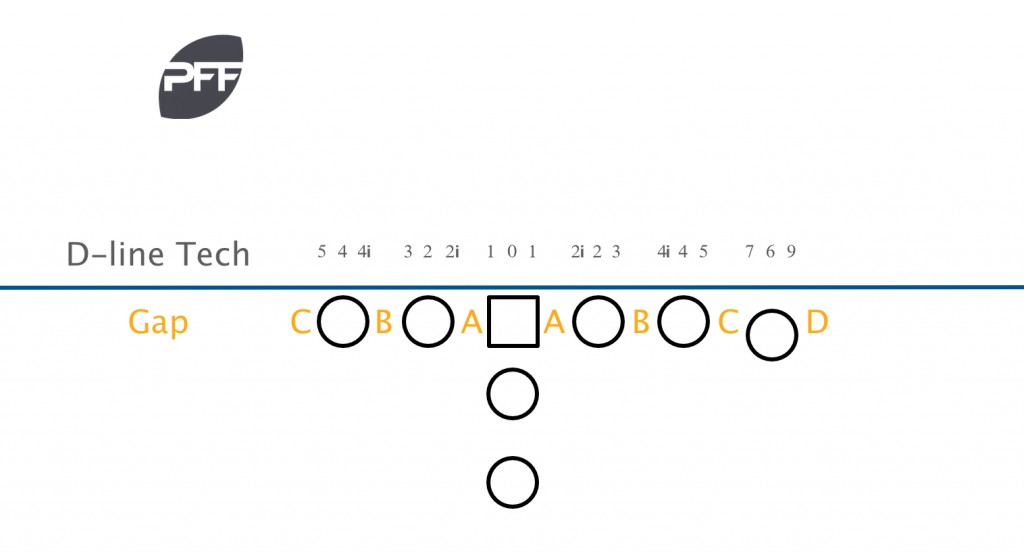- Joined
- Jan 16, 2013
- Messages
- 23,002
- Name
- Dennis


Why Rams' Scheme Change Won't Affect Aaron Donald/PFF
With Wade Phillips in as the Rams' new defensive coordinator, Sam Monson explores the impact of a defensive scheme change.
By SAM MONSON
Nothing causes hysteria and concern among a fanbase like a new coaching hire that brings with it the prospect of a change in defensive scheme up front.
This offseason, Wade Phillips was let go as defensive coordinator in Denver following the head-coaching change there, and was quickly snatched up by the Los Angeles Rams, replacing the departing Greg Williams in the same role. That means a switch in scheme for Los Angeles between 4-3 and 3-4 defensive fronts, which immediately raises questions about whether the Rams have the personnel for that change, and what it means for star defensive tackle, Aaron Donald, a player that has ranked first and second in PFF’s Top 101 player list over the past two years, respectively.
The answer to that last question: almost nothing.
In reality, there isn’t much distinction between 3-4 and 4-3 schemes today the way there once was.
When the 3-4 was first in vogue back in the 1990s, it was a two-gap system, where giant behemoths on the D-line played head-up over their blockers, defending the gap to either side of them and occupying space for the linebackers behind them to make plays uncontested. 4-3 defenses were typically one-gap schemes with smaller bodies up front that attacked gaps and won with penetration, while the 3-4 was a system where the linebackers, not the defensive linemen, were the stars, and the big bodies up front controlled multiple gaps without overcommitting to either one.
3-4 2-gap
Today’s 3-4 defenses are very different animals, and predominantly one-gap systems, just like the 4-3. The NFL is generally a one-gap league these days, and there is very little two-gapping deployed as the league has trended towards smaller, quicker players across the board. Gargantuan nose tackles of the past like Ted Washington, Gilbert Brown and Grady Jackson have been eased out in favor of more athletic players that can move down the line, rush the passer, and not just occupy space. Sub 300-pound defensive tackles are not uncommon, and you will even find 3-4 nose tackles that barely tip the scales at over 300 pounds.

The real driving force behind the adjustments in scheme is the passing game. The NFL is a passing league and now lives in nickel defense, not base. Most teams run with three wide receivers on offense instead of a fullback or second tight end, so defenses have countered with an extra defensive back. Last season, base 4-3 and 3-4 defenses combined (with just four defensive backs on the field) accounted for only 27 percent of defensive snaps, while nickel defense (five defensive backs) was at 55 percent, and dime (six defensive backs) another 10.
What used to be your every-down defense is now being used on average only a quarter of the time. Even if two teams have dramatically different base defensive alignments, they are in sub packages far more often, and those sub packages are much more uniform in structure. Base defenses can see significant differences in alignment, but while the 55 percent of snaps the league spends in nickel defense breaks down into a few different personnel groupings, most of them are essentially different ways of achieving the same alignment.

Whether you are a 3-4 or 4-3 base defense, moving to a nickel personnel grouping takes somebody out of the front-seven and adds a player to the secondary. When that happens, most teams deploy the remaining six players up front in more or less the same way because it is the most efficient way of accounting for every gap along the line.
The first guy to get sacrificed is the big nose tackle for 3-4 teams. Linemen that weigh 320-plus pounds may still be great run defenders, but they tend to offer little as pass-rushing threats. 4-3 teams typically lose one of their three linebackers, leaving both schemes with two edge defenders, two interior defenders and two off-the-ball linebackers to go along with their five defensive backs. The only difference is exactly how those edge defenders stand when they line up. Whether you’re a 3-4 or 4-3 base team, the alignment of the front four in nickel and dime defense tends to wind up the same, but is still differentiated by anachronistic position designations that no longer make sense as descriptive tools.
This image shows Denver’s defense under Wade Phillips and the Rams’ defense under Greg Williams from last year, superimposed into one image.

The teams were both facing near enough the same offensive formation, and they deployed their front four in identical gap alignments. The only difference between the two was that the player furthest to the right side playing on the edge was an outside linebacker for the Broncos (DeMarcus Ware) who rushed from a two-point stance, but for the Rams, that player was a defensive end that had his hand in the dirt (Eugene Sims).
Those players are listed at different positions on the roster, but have identical roles from the exact same alignment on the play in this situation. The distinction between linebacker and defensive end is far less meaningful in the world of nickel defense than that between edge defender, interior defender and off-the-ball linebacker, which is why the Pro-Bowl ballot will remain broken until it adopts that shift in player designation.
The difference in the stance of the edge defender between two-point and hand in the dirt may not even be a team-prescribed technique. There are teams in the league (the Patriots, being one) that allow their edge defenders to choose which they feel more comfortable with on any given play, effectively leaving the designation of that defensive front to one player’s whim each snap (if all you care about is how many players have their hand in the ground). As long as he is lined up in the right spot, those teams don’t care if he is in a two- or three-point stance, so the label of linebacker or defensive end is entirely meaningless and arbitrary for that player on that play.

The same thing is true for interior defenders, too. Aaron Donald is known as a 3-technique defensive tackle, or “under-tackle” in a 4-man defensive-line scheme. 3-technique is simply the name of the defensive-line technique that sees a player lined up over the outside shoulder of the guard, ready to attack the gap to his outside. Most pass-rushing defensive tackles primarily play in that specific technique, but so do most pass-rushing 3-4 defensive ends. Calais Campbell, in Arizona’s 3-4 scheme, plays more 3-technique than any other technique—and more than many defensive tackles—but is listed as a defensive end on the roster. Donald’s alignment distribution in 2016 almost exactly matches that of Denver’s defensive ends, Derek Wolfe and Jared Crick.
The defense that Wade Phillips runs does have some eccentricities compared to other systems in the league—they tend to stay in base defense longer than most teams and then leap straight to six defensive backs, bypassing the nickel packages of five DBs altogether. Even in base defense, though, it is very much like a 4-3 scheme from an alignment standpoint.
When looking at the alignment distribution of Wolfe against Donald last year, the only difference between the two is a small spike for Wolfe in the 4-technique spot, the technique that plays head up over the tackle (the original 3-4 two-gap style alignment we mentioned earlier). There will be plays where we see Donald lined up in this spot, but Wolfe played there less than half as often as he played in the 3-technique spot that Donald usually occupied, and even in that alignment, he is going to be tasked with shooting a gap and defeating that tackle with quickness and hand speed rather than trying to eat up space and two-gap either side of him. In Phillips’ scheme, it is more of a disguise measure than it is a statement of two-gapping intent.
We are going to see Aaron Donald and the rest of the Rams’ defense lining up in a new defensive front under Wade Phillips in 2017, but if you can look beyond how many players have their hand in the ground, operating from a three-point stance, you’ll see that the alignment of those players has changed little despite the shift from 4-3 to 3-4. That once was a seismic shift that required a complete retooling of your defensive personnel to make it work, but in today’s NFL, it’s just a different way to shuffle the same cards. Aaron Donald may now be labelled as a 3-4 defensive end, but he will be the same destructive force as an interior defender as he has been over the past couple of seasons.
[www.profootballfocus.com]
